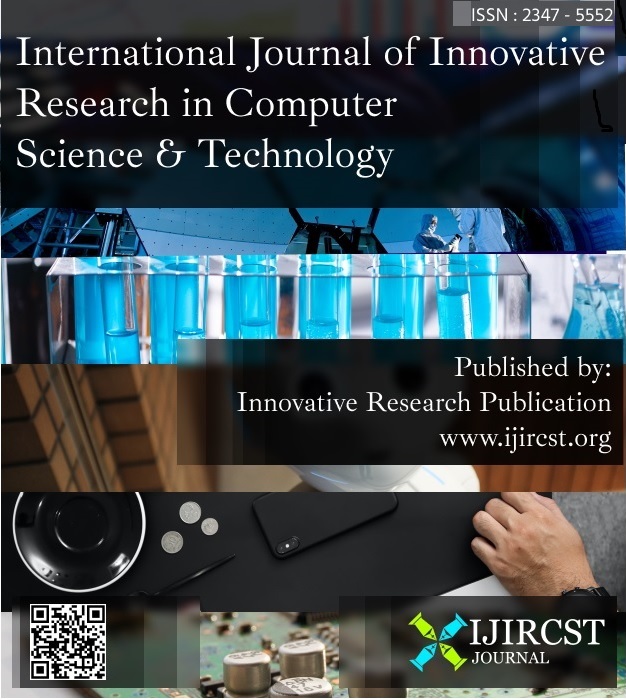Reinforcement Learning: A Comprehensive Overview
Keywords:
Artificial Intelligence, Machine Learning, Reinforcement Learning, Algorithms, ApplicationsAbstract
Machine Learning is one of the most essential parts of Artificial Intelligence. Machine learning now exists as an important innovation and has a sufficient number of uses. Reinforcement Learning is one of the largest Machine Learning applications that enable machines and software agents to work more precisely and resolve behaviors within a specific context in order to maximize their performance. The self-improvement feature, web-based learning, and minimal effort of Strengthening Learning helped the machines become smart agents in basic technology. With the development of robust and effective algorithms, there is still a lot of work to be done. Therefore, the main purpose of this study is to provide Confirmation Learning reviews and applications using various algorithms from a machine learning perspective.
References
L. P. Kaelbling, M. L. Littman, and A. W. Moore, "Reinforcement learning: A survey," J. Artif. Intell. Res., vol. 4, pp. 237-285, 1996.
M. A. Wiering and M. Van Otterlo, "Reinforcement learning," Adaptation, Learning, and Optimization, vol. 12, no. 3, pp. 729, 2012.
C. Szepesvári, "Algorithms for reinforcement learning," Synthesis Lectures on Artificial Intelligence and Machine Learning, vol. 4, no. 1, pp. 1-103, 2010.
A. G. Barto and R. S. Sutton, "Reinforcement learning," Handbook of Brain Theory and Neural Networks, pp. 804-809, 1995.
A. Nowé, P. Vrancx, and Y.-M. De Hauwere, "Game theory and multi-agent reinforcement learning," in Reinforcement Learning. Springer, Berlin, Heidelberg, 2012, pp. 441-470.
Y. Li, "Reinforcement learning applications," arXiv preprint arXiv:1908.06973, 2019.
L. M. Gambardella and M. Dorigo, "Ant-Q: A reinforcement learning approach to the traveling salesman problem," in Machine Learning Proceedings 1995. Morgan Kaufmann, 1995, pp. 252-260.
A. Barreto et al., "Successor features for transfer in reinforcement learning," in Advances in neural information processing systems, vol. 30, 2017.
F. Fernández and D. Borrajo, "Two steps reinforcement learning," International Journal of Intelligent Systems, vol. 23, no. 2, pp. 213-245, 2008.
H. R. Tizhoosh, "Reinforcement learning based on actions and opposite actions," in International Conference on Artificial Intelligence and Machine Learning, vol. 414, 2005.
D. Singh, S. Sinha, and V. Thada, "Review of attribute based access control (ABAC) models for cloud computing," in 2021 International Conference on Computational Performance Evaluation (ComPE), IEEE, 2021.
S. Sinha, A. Jain, and S. S. Agrawal, "Empirical analysis of linguistic and paralinguistic information for automatic dialect classification," Artificial Intelligence Review, vol. 51, pp. 647-672, 2019.
A. C. Jaiswal, S. Sinha, and P. Makkar, "Using TRPO to control quadruped gait behaviors," Journal of Integrated Science and Technology, vol. 11, no. 4, pp. 574-574, 2023.
S. Mehrotra, S. Sinha, and S. K. Sharma, "Overview of the Internet of Things and Ubiquitous Computing," in Blockchain Technology for Data Privacy Management. CRC Press, 2021, pp. 1-19.
P. Makkar, S. Sikka, and A. Malhotra, "Optimization of software quality attributes using evolutionary algorithm," International Journal of Electrical and Electronics Research, vol. 10, no. 2, pp. 131-137, 2022.
P. Makkar, S. Sikka, and A. Malhotra, "A Multi-Objective Approach for Software Quality Improvement," Journal of Physics: Conference Series, vol. 1950, no. 1, IOP Publishing, 2021.




